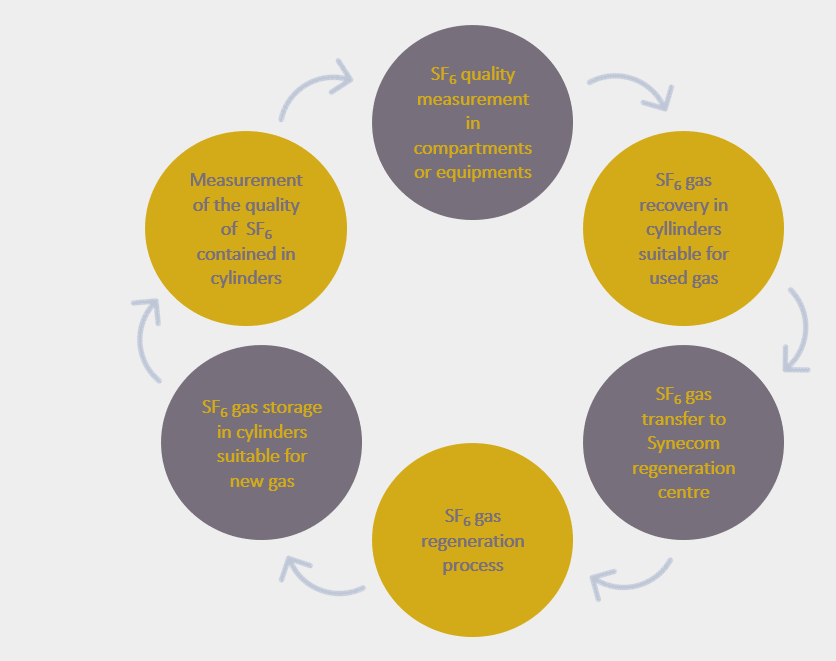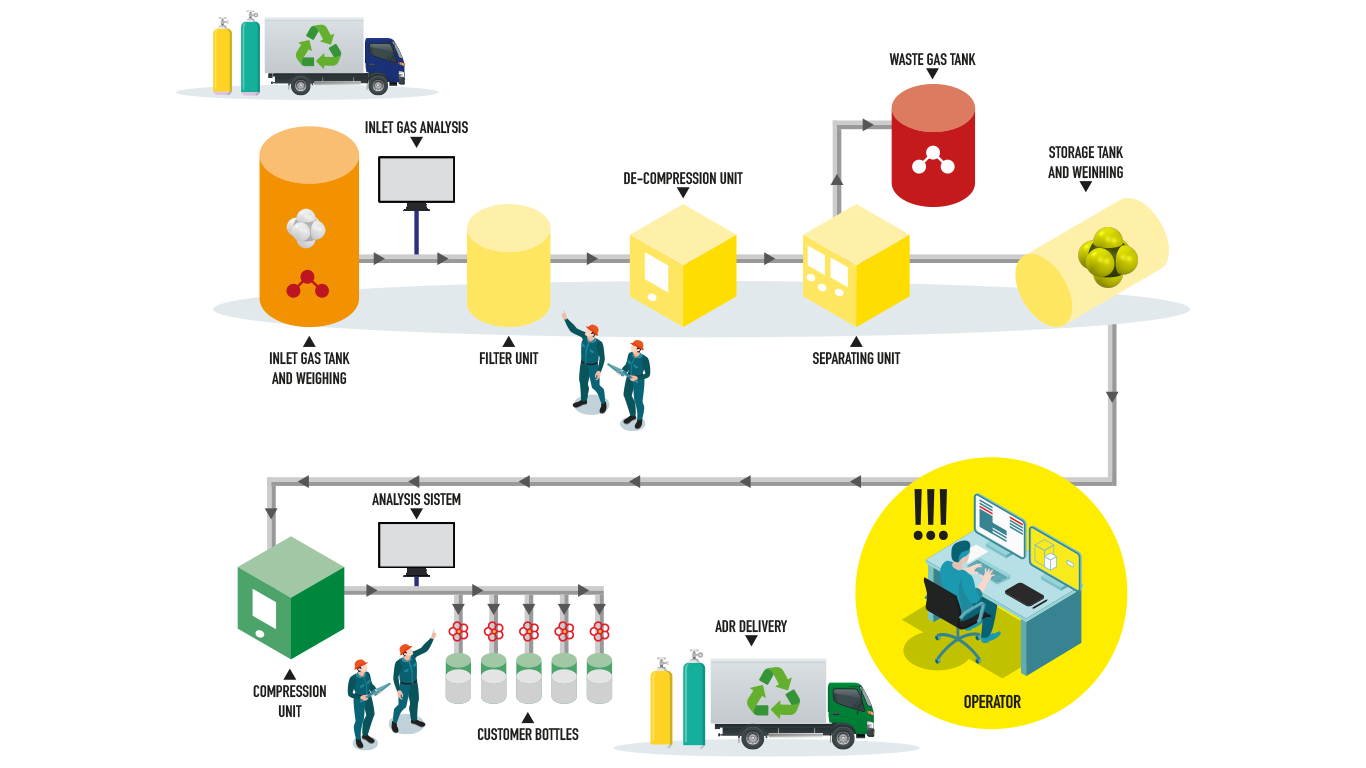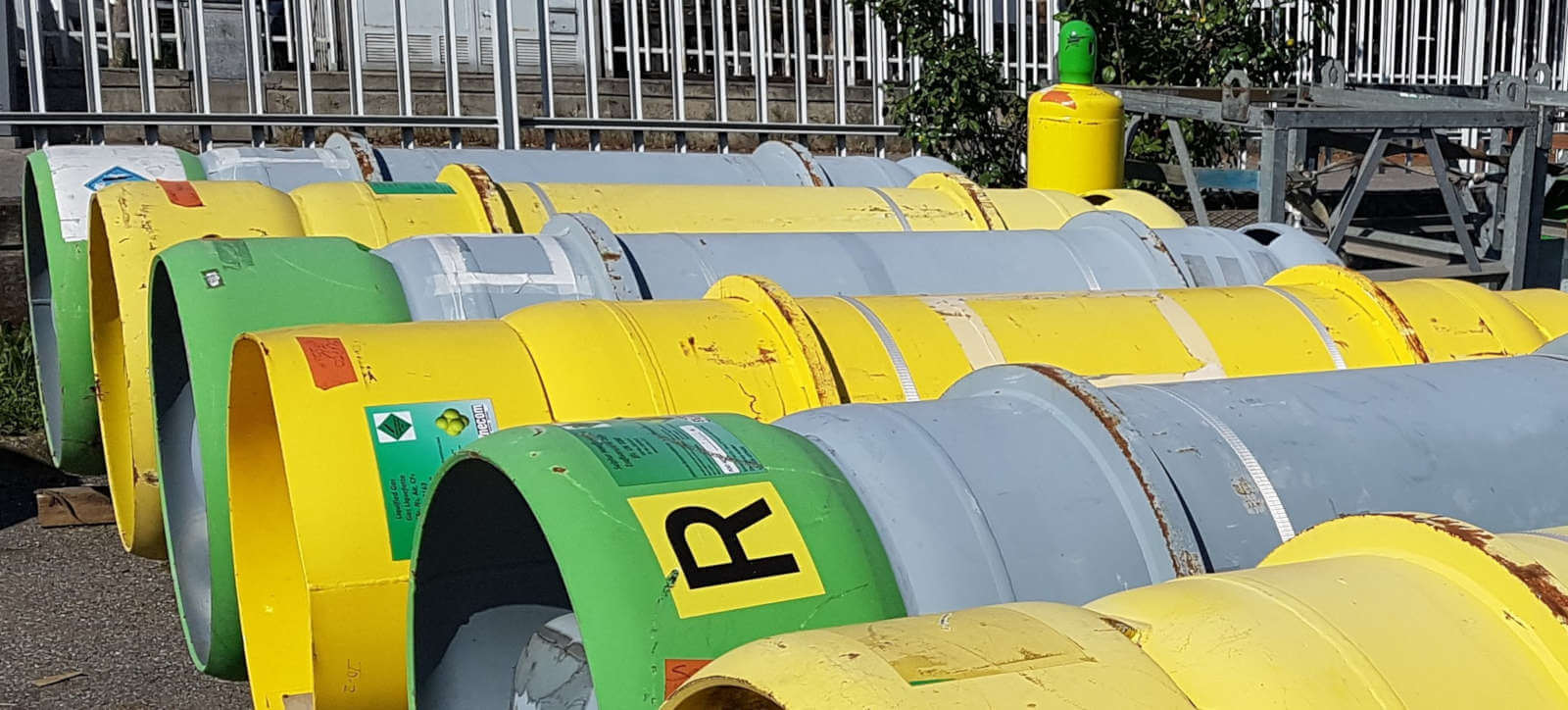- 01 Environment
- 02 About Us
- 03 Products
- 04 SF6
- 05 Applications
- 06 Academy
SF6 GAS IS A HIGHLY IMPACTFUL SYNTHETIC GAS:
THE MORE WE REGENERATE, THE LESS WE PRODUCE.

Circular economy
SF6 gas regeneration is an industrial process that can extend the life cycle of sulphur hexafluoride gas, helping to generate additional economic and environmental value..
Synecom regeneration plant is able to regenerate decomposed, strongly decomposed and heavily contaminated SF6 gas from air or moisture. In fact, through special filtering systems and cryogenic treatment cycles, Synecom regeneration plant purifies SF6 gas and bring it to levels of purity equal to or greater than new.
Regeneration and its advantages
The advantages of regeneration are based on three fundamental aspects:
- Environment: every kilogram of regenerated SF6 gas avoids the emission of 2.05 tonnes of CO2 equivalent into the atmosphere.
- Welfare: the production of new gas and the disposal of used gas, another source of atmospheric emissions to the detriment of future generations, is avoided.
- Economic: saves about 50% compared to the cost of producing and wasting of the same amount of SF6 gas.


Our results
By monitoring the quantities of regenerated Sulphur Hexafluoride gas since 2014, we have observed that the trend in demand for SF6 gas regeneration has continued to grow: in particular, a 300% growth has been observed from 2014 to 2020.
One of the main advantages of SF6 gas regeneration is that it avoids both the production of new SF6 and the disposal of used SF6.
Thanks to this process, from 2014 to 2020, it was possible to avoid the release into the atmosphere of approximately 600000 tons of CO2 equivalent..
against climate change
Closed Cycle Management of SF6
Sulphur hexafluoride is an insulating gas used in equipment serving the National Transmission Grid.
SF6 leaks are Terna Rete Italia’s main source of direct emissions: the Closed Cycle Management of SF6 project, in collaboration with Synecom, is part of Terna Rete Italia’s general effort to reduce SF6 gas emissions into the atmosphere, envisaging the complete reuse of SF6 gas after its regeneration.
At the same time, the waste, production and release of SF6 gas into the environment is kept to a minimum.
Synecom receives SF6 gas recovered from equipment that is no longer suitable for reuse (due to the presence of impurities above the limits set by standard CEI EN 60480) for regeneration and reuse of the same gas in the same equipment.


